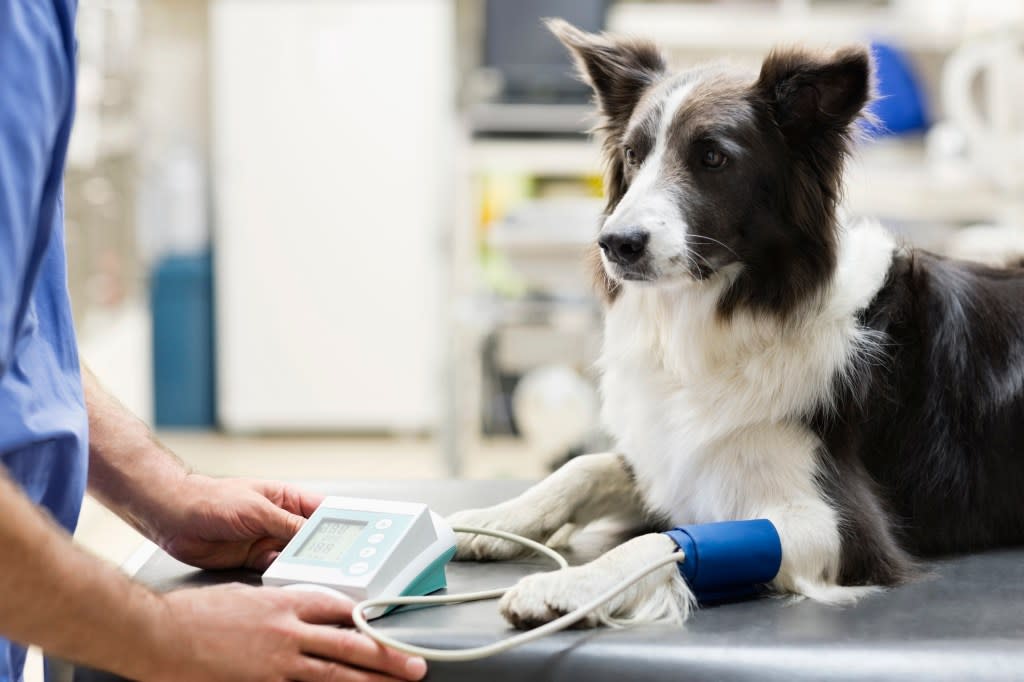Anesthesia for Dogs: Uses, Dosage, & Side Effects

Anesthesia is a medical procedure used to induce unconsciousness and alleviate pain in dogs during surgical procedures, diagnostic tests, or dental work. Essentially, it is a controlled and temporary loss of sensation and awareness that ensures a dog’s comfort and safety. When your pet needs surgery or a procedure that could be painful, anesthesia makes the experience as stress-free and painless as possible.
If you’re wondering how much it costs to put a dog under anesthesia, the price generally ranges from $90 to $400 for minor procedures. However, for more complex surgeries or treatments requiring longer sedation periods, the cost can rise from $800 to $1,200 or even higher.
Here’s what you should know about anesthesia’s uses, dosage, and side effects for dogs.
Uses of anesthesia for dogs

Anesthesia is used in a variety of situations ranging from routine surgeries such as spaying/neutering to more complex procedures like dental work, biopsy sampling, or emergency surgeries. Besides surgical applications, it is sometimes necessary for diagnostic procedures — such as MRIs and CT scans — that require the dog to remain completely still. Additionally, some minor procedures may opt for sedation — a milder form of anesthesia that reduces anxiety and makes the dog more manageable without inducing complete unconsciousness.
There are two main types of anesthesia for dogs: general anesthesia and local anesthesia. When a dog is put under general anesthesia, they will be completely unconscious and unable to feel any pain during the procedure. This is typically used for more invasive surgeries such as spays, neuters, or dental procedures. In contrast, local anesthesia numbs only a small, specific area of the body, allowing the dog to remain awake and alert without feeling pain in the affected area. Vets might consider this option for minor procedures or as a complement to general anesthesia to provide pain relief post-surgery.
Dosage of anesthesia for dogs
The following is a guideline for the typical use of the drug in dogs and must not replace your vet’s advice for your individual pet.
The dosage of anesthesia varies significantly and depends on your dog’s size, age, breed, and the specific health conditions they may have. Vets typically use a combination of pre-anesthetic sedation to calm the dog, followed by an induction agent to initiate anesthesia, and maintenance drugs to keep them anesthetized. Commonly used anesthetics include propofol for induction and isoflurane or sevoflurane gases for maintenance.
Anesthesia’s effects can last from a few minutes to several hours, depending on the procedure and drugs used. Typically, most dogs start to wake up from anesthesia within a few hours of the procedure, but it may take up to 24 to 48 hours for the effects to wear off completely. During this period, your dog may appear groggy, unsteady on their feet, or drowsy, which are entirely normal signs of the anesthesia wearing off. The veterinary team will continue monitoring your pet until they are fully awake and it’s safe for them to go home.
It’s crucial to follow your vet’s advice both before and after the use of anesthesia. You may need to restrict food and water for a certain period before the procedure to reduce the risk of vomiting and aspiration. Before administering anesthesia, your vet will conduct a thorough pre-anesthetic evaluation on your dog to determine their eligibility for anesthesia. This evaluation may include blood tests and a physical examination.
Throughout the procedure, the medical team will closely monitor your dog’s vital signs such as heart rate, breathing rate, blood pressure, and oxygen levels. This constant vigilance ensures your pet’s safety and allows for immediate adjustments to the anesthetic protocol if needed.
Side effects of anesthesia for dogs

While anesthesia is generally safe for dogs, as with any medical procedure, there are potential risks and side effects. These can vary in severity and include:
Shivering
Low blood pressure
Temporary lack of appetite
Drowsiness
Most side effects are temporary and resolve as the anesthesia wears off. However, if a dog is given too much anesthesia, it could lead to more severe complications such as prolonged recovery times, respiratory distress, seizures, or even organ failure in rare instances. Therefore, it’s crucial for the veterinary team to closely monitor the dog before, during, and after the procedure to promptly address any adverse effects.
It’s also important to note that some breeds have unique sensitivities to anesthesia that could impact their response and recovery. According to the American Animal Hospital Association (AAHA) guidelines, Greyhounds may experience longer recovery periods after receiving certain anesthetics like barbiturates. Similarly, Cavalier King Charles Spaniels have a predisposition to cardiac diseases that could complicate anesthesia. Additionally, brachycephalic breeds — including Bulldogs, Pugs, and Boston Terriers — present with increased airway-related complication rates due to their distinctive facial structure.
Remember to always consult with your vet if you have any concerns or questions before your dog undergoes anesthesia. They can provide you with the information specific to your pet’s health condition and the procedure in question, ensuring the safest possible outcome.
The post Anesthesia for Dogs: Uses, Dosage, & Side Effects appeared first on DogTime.
